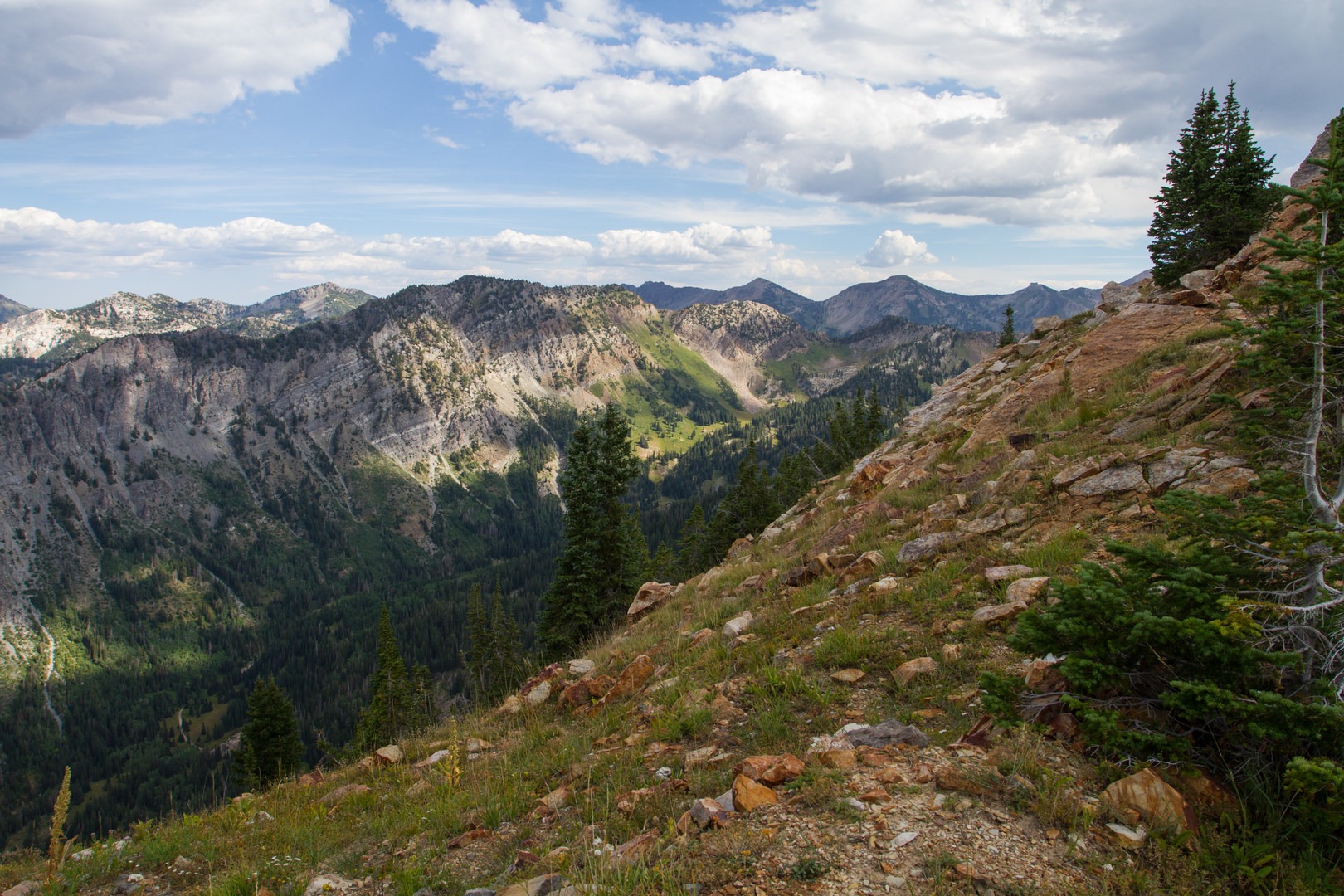You are here
If you’re looking for an adventure in the Wasatch that includes faint trails, bushwhacking, old mining sites, substantial elevation gain, fantastic views and scrambling, all in a half-day hike (if you’re fit and don’t get too turned around), then the Carbonate Pass hike to Kessler Peak is just the thing. About halfway up Big Cottonwood Canyon, Kessler Peak looms over the road. This 10,403-foot mountain is the highest point in the middle section of the canyon and offers unobstructed views of much of Big Cottonwood as well as the peaks of the Little Cottonwood ridgeline. If you’d rather take the easiest way up Kessler, a there-and-back hike via the North Route might be a better choice. For the hardy, the solitude, spectacular views, and history make this hiking loop using Carbonate Pass more than worth the trouble.
The route begins at the Mill D South Fork Trailhead where the hike to Donut Falls starts. Take the old mining road about 1.5 miles south and look for a large mine dump on the right. Looking up the slopes to the west, a prominent yellow spur ridge is obvious near the top. The trail will stay just to the south of this ridge. A few hundred yards lower, note the faint diagonal line of light-colored rock: this is the upper part of the trail and the best target to aim for if you lose the trail and end up bushwhacking. The trail begins by contouring around the mine dump (have a look at the ruined structure here) and ascends the slope initially heading south before curving to the north and climbing to reach Carbonate Pass.
Climbing steadily, the trail passes through aspens and crosses an open meadow. A series of distinct switchbacks leads up toward the yellow spur ridge. As you approach the top of the pass the trail climbs alongside another large mine dump. The ground here is strewn with debris from mining structures. Of particular note are the rusted cables that remain from a tramway that was used to carry ore down from the mine. At the top of the pass, an open, grassy saddle offers views to the east and west. On the Mineral Fork (west) side of the saddle, look for the mostly-collapsed stone walls of miners’ cabins. After the hike you’ve just done seeing few other people, it’s hard to imagine that this was a bustling place where people lived and worked over a hundred years ago.
From Carbonate Pass, the route to the summit of Kessler Peak follows the ridge to the north. A distinct track leads along the Mineral Fork side of the ridge. The easiest way to the summit follows this track, which drops about 100 feet before ascending a steep, loose couloir that takes you straight to the top. This route has some scrambling and a bit of route finding, but it’s not difficult. An alternative route sticks to the top of the ridge and requires more scrambling in the third and fourth class range. At the summit, spectacular views of Big Cottonwood Canyon, the Salt Lake Valley, and the Little Cottonwood ridge await.
To return, either go back the way you came or descend by the shorter and likely faster North Route. The North Route Trail starts down the ridge leading toward the lower north summit and descends steeply on the Mineral Fork side before contouring around the north slopes of the mountain. The trail joins the Cardiff Fork mining road across from the intersection with the first section of the trail to Donut Falls.
Expect this hike to take about half a day. The route is best done from spring to fall. While winter ascents may be possible, and the area is popular with backcountry skiers, Kessler Peak is surrounded by large, dangerous avalanche paths, so don’t go there in the winter without appropriate skills and equipment.
Logistics + Planning
Current Weather: Powered by Dark Sky






























Comments
Sign In and share them.